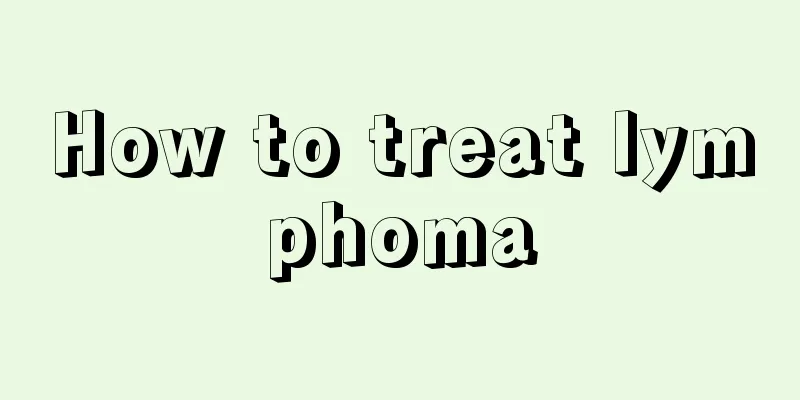Will there be scars after tattoo removal?

|
Tattoos are more popular among young people. Getting different tattoos on different parts of the body can make you look more personalized. However, there are also many people who do not want to have tattoos anymore after getting them, so they choose to remove them by tattoo removal. Tattoo removal is very painful, and if it is not properly cared for, it will leave certain scars. However, scars after tattoo removal can be removed by the following methods. 1. Non-surgical treatment (1) Pressure therapy Using a special pressure sleeve to apply pressure is suitable for those with large scar area who are not suitable for radiotherapy and local drug treatment. The daily downtime should not exceed 30 minutes. This method is not effective for active keloids, but it can reduce the dose of postoperative radiotherapy and injection. (2) Chemotherapy Use long-acting steroid preparations and inject them directly into the scar to inhibit the excess collagen in the scar and achieve the effect of scar degeneration. The main side effects include skin atrophy, depigmentation, capillary dilation, necrosis, ulcers and Cushing's syndrome, most of which are reversible. Other chemical drugs such as cytotoxins, immunosuppressants and other drug treatments have been reported, but serious systemic side effects limit their application. (3) Radiotherapy Early use of electron beam or X-ray irradiation (within 24 hours) after keloid excision can reduce postoperative recurrence of keloid and improve the cure rate. Due to the specificity of radiation, it can increase the incidence of malignant tumors, so it is emphasized to be used in the late stage of keloids and when other methods are ineffective. (4) Laser treatment It is suitable for flat scars without obvious functional impairment, and scattered, uneven, depressed scars of varying sizes left after healing of smallpox, chickenpox, and acne. Using ND, YAG or CO2 laser, the scar tissue is vaporized to eliminate the scar and the skin pigment abnormalities on the scar. (5) Others For example, reports on the therapeutic effects of cryotherapy, wax therapy, iontophoresis, and ultrasound on hypertrophic scars and keloids are inconsistent, and there is a lack of large-scale case controls and follow-up. 2. Surgery (1) De-tensioning and fine suture after scar excision It is a commonly used and increasingly improved surgical method for treating scars, and is mostly used for scars of smaller area. During the operation, the tension of the incision is fully reduced, the operation is performed delicately, secondary damage is reduced, and the degree of postoperative scar hyperplasia is reduced. The clinical effect is definitely obvious. (2) Dermabrasion It is a surgical method that grinds the epidermis and superficial dermis of the skin to improve the irregularities on the skin surface, making it smooth and flat and with a similar color. It is suitable for superficial scars left over from acne, smallpox, chickenpox, shingles, eczema, trauma, burns or surgery. If necessary, it can be performed simultaneously with scar surgical excision, and the effect is better than simple grinding. (3) Scar release and local reshaping For smaller, tense cord-like or webbed scars, the scar can be removed and the surrounding normal skin tissue can be used to form a flap, which can then be cross-transposed to repair the skin defect at the scar site. (4) Scar excision and free skin grafting Larger hypertrophic scars can be surgically removed, and then free skin grafts can be cut from normal parts of the body and transplanted to the scar surface to repair the wound and restore skin function. However, the color of the transplanted skin is often quite different from that of the surrounding skin. In addition, contracture is prone to occur after surgery, which can cause deformation of surrounding tissues and organs or induce functional disorders. (5) Scar excision and skin flap transplantation Because the flap contains more subcutaneous fat tissue, in addition to being used to repair skin defects after scar excision, it also has the function of protecting deep tissues. The commonly used expander technology currently also belongs to flap transplantation. By burying the expander under the normal skin around the scar, after several months of expansion, excess skin can be "grown" to repair the scar. |
<<: How to boil Chinese medicine for the best effect
>>: The correct way to use aloe vera gel to remove scars
Recommend
How much physical energy does a cigarette destroy after sex?
Long-term smoking is not only harmful to the resp...
Does Patchouli have any effect on pregnant women?
It is well known that Patchouli can clear away he...
What are the symptoms of asthma?
Asthma is a very harmful disease that can occur i...
There is white discharge on the tonsils
We have all experienced going to the hospital for...
h-6 reflux esophagitis patch
Patients with reflux esophagitis will suffer from...
What are the symptoms of stomach cramps?
The most common symptom of gastric spasm is that ...
How to maintain the effect after chemotherapy for nasopharyngeal carcinoma
How to maintain after chemotherapy for nasopharyn...
Can I drink expired saffron?
Can you drink saffron that is expired? If it is m...
Can hemorrhoid cream cure acne?
Acne is a relatively common skin disease, and acn...
What should I do if I swallow bubble gum?
In life, many people usually have the habit of ch...
Blisters on the child's legs
When summer comes, children often develop blister...
What causes cerebellar atrophy?
Many people do not understand cerebellar atrophy....
What is the reason for a hard lump next to the anus?
The hard lump next to the anus may be caused by h...
Can poor sleep cause high blood sugar?
Lifestyle and eating habits are particularly impo...
4 common methods for treating lymphoma
Lymphoma is a malignant tumor originating from ly...









